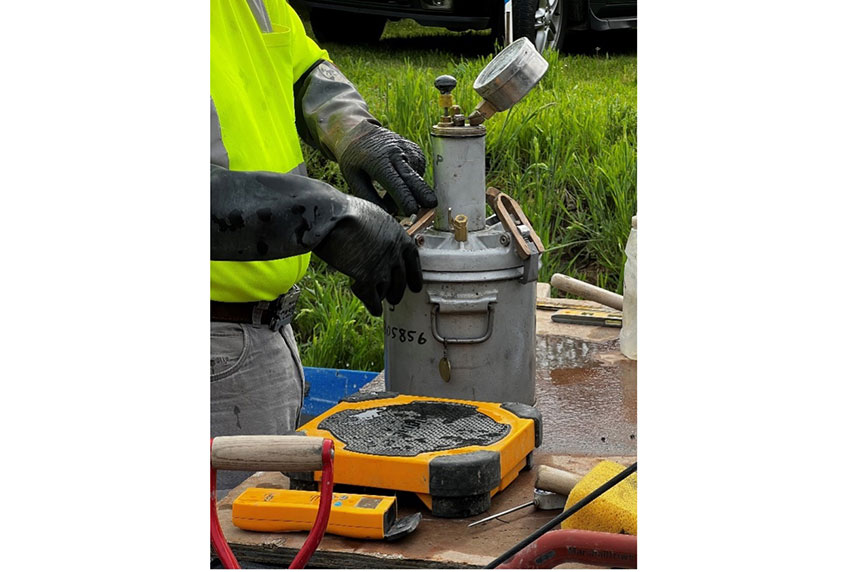Concrete Innovations
 1 AIA LU/Elective; 1 GBCI CE Hour; 0.1 ICC CEU; 0.1 IACET CEU*; 1 AIBD P-CE; AAA 1 Structured Learning Hour; This course can be self-reported to the AANB, as per their CE Guidelines; AAPEI 1 Structured Learning Hour; This course can be self-reported to the AIBC, as per their CE Guidelines.; MAA 1 Structured Learning Hour; This course can be self-reported to the NLAA.; This course can be self-reported to the NSAA; NWTAA 1 Structured Learning Hour; OAA 1 Learning Hour; SAA 1 Hour of Core Learning
1 AIA LU/Elective; 1 GBCI CE Hour; 0.1 ICC CEU; 0.1 IACET CEU*; 1 AIBD P-CE; AAA 1 Structured Learning Hour; This course can be self-reported to the AANB, as per their CE Guidelines; AAPEI 1 Structured Learning Hour; This course can be self-reported to the AIBC, as per their CE Guidelines.; MAA 1 Structured Learning Hour; This course can be self-reported to the NLAA.; This course can be self-reported to the NSAA; NWTAA 1 Structured Learning Hour; OAA 1 Learning Hour; SAA 1 Hour of Core Learning
Learning Objectives:
- Describe new technologies used in concrete manufacturing that utilize recycling of materials.
- List ways in which these innovative concrete products can improve project performance.
- Explain how to implement the latest concrete innovations in building and infrastructure projects.
- Discuss the importance of incorporating new technologies to enhance resilience and sustainability in the built environment.
This course is part of the Concrete Academy
Future of LC3
One of the key discussions around LC3 compared to other SCM mixes, is that its two main components—limestone and calcined clay—are widely available for the foreseeable future. Calcined clay can be obtained through a variety of natural clay sources, some of which is in current stockpiles of waste. Limestone is, likewise, a naturally abundant material. Fly ash and slag is available now, but the shutdown of coal fired electric power plants and steel blast furnaces respectively, means that the supply of those materials is dwindling.
Another area where LC3 has an advantage is in testing. It has been widely tested and demonstrated compared to some other SCMs and technologies, and has seen favorable results in demonstration projects. Its use is being encouraged by organizations such as the United Nations Development Programme (UNDP) and the International Energy Agency (IEA).
BIOCHAR CONCRETE
Biochar is a type of charcoal produced from organic matter. It’s created by heating organic material, such as wood chips or agricultural waste, in an oxygen-deprived environment through a process called pyrolysis. Biochar is often used in agriculture as a soil additive to improve its quality and fertility because the porous structure of biochar can increase soil water retention and nutrient availability, leading to better plant growth. It can also be made from agricultural and forestry waste materials that would otherwise be burned or left to decompose, contributing to greenhouse gas emissions and air pollution. Converting waste into biochar makes that waste useful while also reducing their environmental impact. In addition, the process of pyrolysis used to make biochar produces bio-oil and syngas, and those can be used as renewable sources of energy.

Photo courtesy of John Mead, Solid Carbon
Biochar is a type of charcoal produced from organic matter that can improve concrete’s mechanical and thermal properties while also reducing the carbon footpring of building projects.
When added to concrete, biochar can improve concrete’s mechanical and thermal properties. It can increase the strength and durability of concrete by reducing cracking and enhancing its resistance to freeze-thaw cycles. The porous nature of biochar allows it to absorb moisture, which can reduce the weight of the concrete and improve its insulating properties.
Incorporating biochar into concrete has strong environmental benefits. It is a carbon-negative material, meaning that it removes carbon dioxide from the atmosphere when it is produced. By using biochar in concrete, it is possible to greatly reduce the carbon footprint of construction projects and contribute to climate change mitigation efforts.
Biochar concrete represents an innovative approach to sustainable construction that combines the benefits of traditional concrete with the advantages of biochar.
History of Biochar Innovations
Several pioneering milestones have helped support biochar’s use in concrete. From 2012 to 2016, research and experiments were able to showcase its effects as a filler and improve on its mechanical properties. A 2012 study found that a dosage of 5% by weight of cement of hardwood biochar improved the compressive strength of concrete by between 10% and 12%.
In 2014, the Ithaka Institute in Sion, Switzerland, where biochar is studied, was host to several onsite demonstration projects utilizing a wall plaster containing biochar. In 2015, bamboo biochar produced at 850 degrees Celsius and a heating rate of 60 degrees C per minute for an hour was able to improve the compressive strength of biochar-cement pastes by 40-50%, toughness by 103%, and flexural strength by 66%. In 2016, research found that adding biochar up to 1 wt% increased the fracture energy of cement-based composites by 61%.












